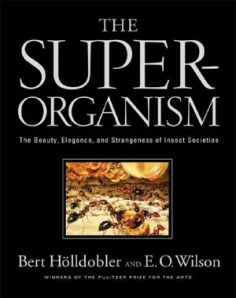 My copy arrived from Amazon the day before yesterday. I’ve not given it anything more than a couple cursory thumb-throughs, but I’m immediately left with the impression of schizophrenia.
My copy arrived from Amazon the day before yesterday. I’ve not given it anything more than a couple cursory thumb-throughs, but I’m immediately left with the impression of schizophrenia.
The bits on social organization, behavior, communication, and levels of selection- mostly Bert Hoelldobler’s sections- seem an engaging and modern review, while the chapters dealing with ant history and evolution- Wilson’s area- are… How do I say this diplomatically? Rubbish.
The past ten years have brought immeasurable advances in our knowledge of ant evolution, both in breadth and detail. Inexplicably, Wilson fails to recognize it. Really. He cites some recent paleontology but next to none of the large and growing body of genetic work. He reproduces the phylogeny of Moreau et al (2006), but the accompanying text reveals that he does not understand its meaning, nor that it can and is being used to connect the vast body of previously disparate natural history tidbits that Wilson himself relates throughout the book. At best, Wilson’s section is charming but irrelevant, at worst it will serve to further confuse a field that is already finding clarity independent of Wilson. We could use a comprehensive reference detailing the great evolutionary story of the ants, but at first glance this isn’t it.
Oh, and the production value is high. It’s a weighty, glossy, attractive book. Lots of illustrations. The sort of thing that on a coffee table is sure to impress, even if you don’t plan on opening it.
I’ll post more detailed comments as I give it a more proper reading.

 Martialis heureka Rabeling & Verhaagh 2008
Martialis heureka Rabeling & Verhaagh 2008












